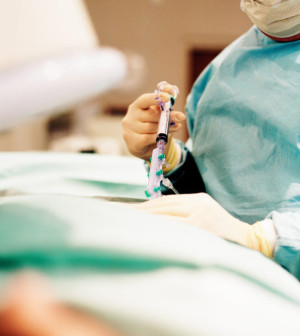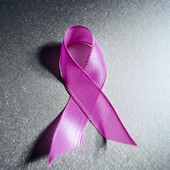- Double Mastectomy May Offer No Survival Benefit to Women With Breast Cancer
- Toxic Lead Found in Cinnamon Product, FDA Says
- Certain Abbott Blood Sugar Monitors May Give Incorrect Readings
- Athletes Can Expect High Ozone, Pollen Counts for Paris Olympics
- Fake Oxycontin Pills Widespread and Potentially Deadly: Report
- Shingles Vaccine Could Lower Dementia Risk
- Your Odds for Accidental Gun Death Rise Greatly in Certain States
- Kids From Poorer Families Less Likely to Survive Cancer
- Tough Workouts Won’t Trigger Cardiac Arrest in Folks With Long QT Syndrome
- At-Home Colon Cancer Test Can Save Lives
3D Mammograms May Improve Breast Cancer Screening


Newer, three-dimensional mammograms may be better at picking up invasive tumors and avoiding false alarms than traditional breast cancer screening methods, a study of 13 U.S. hospitals suggests.
Researchers found that 3D mammography, used along with standard digital mammograms, bumped up breast cancer detection rates by more than 40 percent.
At the same time, there was a 15 percent dip in the number of women who had to return for more tests because of a suspicious mammogram finding.
Experts said the findings, reported in the June 25 issue of the Journal of the American Medical Association, suggest the 3D technology can boost the accuracy of mammography screening.
“This is very positive,” said Dr. Etta Pisano of the Medical University of South Carolina in Charleston, who wrote an editorial published with the study.
“If you have access to [3D mammography], you should feel comfortable getting it,” Pisano said.
But, she stressed, “you don’t have to go looking for it, either.”
That’s partly because 3D mammograms are more expensive than standard ones, and most insurers don’t cover them yet. Women would have to pay the additional charges — typically from $50 to $100.
The scans also expose women to more radiation, Pisano said.
Plus, there are bigger-picture questions, including whether 3D mammography — known as digital breast tomosynthesis — ultimately makes a difference in how breast cancer patients fare, one expert said.
“We would like to see long-term outcomes,” said Dr. Sarah Friedewald, the lead researcher on the new study and a radiologist at Advocate Lutheran General Hospital in Park Ridge, Ill.
But she said her team’s findings point to a shorter-term advantage. “We found 3D mammography really does help doctors find more invasive breast cancers while cutting down on callbacks,” Friedewald said.
A “callback” happens when a mammogram picks up something suspicious, and the doctor wants to do additional imaging or a biopsy. For most women, it turns out to be nothing; according to the American Cancer Society, fewer than 10 percent of women called back for more testing are diagnosed with breast cancer.
If 3D mammography can reduce those callbacks, “that’s a pretty big deal,” Pisano said. Additional tests can be anxiety-provoking for women, and they use up time and resources, she said.
In the United States, 3D mammography has been available since 2011. It was originally approved by the Food and Drug Administration to be used along with standard, two-dimensional digital mammograms. But last year, the agency approved a 3D system that can be used alone.
Conventional mammography takes images of the breasts from two angles. In contrast, the 3D scanner moves in an arc over the breasts, taking images from various angles. The point is to improve doctors’ ability to spot small tumors and reduce false scares.
One concern, though, is that the greater sensitivity will find more growths called ductal carcinoma in-situ, or DCIS. Those are abnormal cells in the milk ducts that may, or may not, progress to cancer. Since doctors have no way of telling, women with DCIS usually receive treatment.
In the new study, though, rates of DCIS detection didn’t rise.
Friedewald’s team looked at nearly 455,000 screening mammograms done at 13 hospitals that all switched from digital mammography to digital-plus-3D after the 2011 FDA approval. In the year before switching, the hospitals found 1.4 cases of DCIS per 1,000 screenings, and that remained unchanged after the switch.
Instead, detection of more-advanced, “invasive” cancers went up 41 percent.
“That suggests it’s finding more important cancers,” Pisano said.
Across the hospitals, doctors caught 5.4 cancers for every 1,000 women screened — versus 4.2 per 1,000 in the year before the centers added the 3D technology.
Still, Pisano said the best proof that 3D is actually better would come from a clinical trial, done at multiple hospitals, where women are randomly assigned to either standard mammography or 3D.
“I do believe we should prove 3D mammography — the newest [stand-alone] version — is better than digital before everybody goes out and buys one of these machines,” Pisano said.
One question, said Pisano and Friedewald, is whether 3D might work best for certain women — such as younger women with denser breast tissue.
“We haven’t figured it all out yet,” Pisano said.
But, she added, after years of “one-size-fits-all” mammography screening guidelines, research may lead to more tailored recommendations for different groups of women.
Hologic, Inc., of Danbury, Conn., which manufactures a 3D mammography scanner, funded the study. Friedewald and several co-researchers are advisors to the company.
More information
The American Cancer Society has more on breast cancer screening.
Source: HealthDay
Copyright © 2024 HealthDay. All rights reserved.










